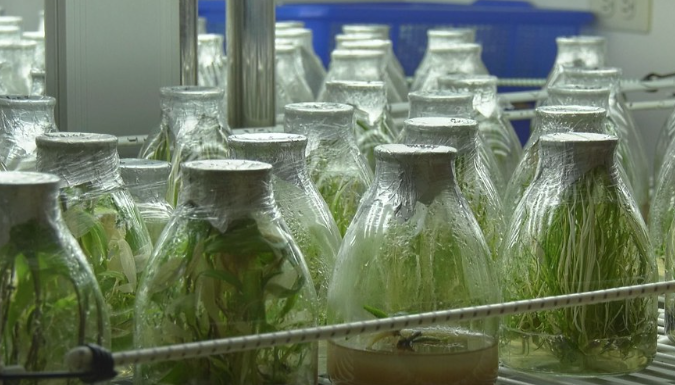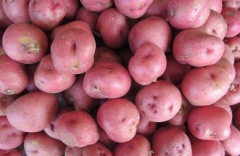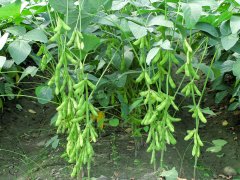What are the endangered plants in Taiwan? Introduction to the list of plants that are about to become extinct in Taiwan
Do you know? Many native plants are disappearing from the earth in silence. The study points out that one out of every five plants on earth is in danger of extinction. In fact, you and I can keep these plants from disappearing and let them continue to live in this world.
Visiting the ecological pools of schools and parks, it is not difficult to find Taiwan's Pingpeng grass with yellow flowers, but you may not know that this common aquatic plant is authentic and endemic to Taiwan. Apart from man-made ecological pools, it is almost impossible to find wild populations in Taiwan.
Pingpeng grass in Taiwan is endemic to Taiwan. at present, apart from man-made ecological ponds, wild populations can hardly be found in Taiwan.
In order to find a pond where Pingpeng grass grows in Taiwan, we came to Taoyuan, the hometown of Kutang. Yu Lin, an expert in aquatic plants, led us through the country roads around Longtan and Waxberry. After getting lost for several hours, I drilled into an awn grass that could not even be found and was taller than a human. What caught my eye was that the water was covered with bright yellow flowers of Pingpeng grass in Taiwan, although this pond was only a little bigger than the basketball court, but it was probably the only wild habitat in Taiwan.
Oval leaves are affixed to the water surface, and one layer upon layer of Taiwan's Pingpeng grass is a native plant of the Nymphaeaceae family in Taiwan. The western plain of Taiwan is its native place. At present, it is only known that it is still distributed around Taoyuan. As many ponds have been developed into residential areas or factories, wild populations gradually disappear. Yu Lin-li has observed over the past few years that ten years ago, many ponds still had Pingpeng grass in Taiwan, but in the past or two years, only in this pond, almost all others have become extinct.
The oval leaves are affixed to the surface of the water, and one layer upon layer of Taiwan's Pingpeng grass is the authentic Nymphaeaceae plant in Taiwan.
In 2018, in order to save and protect these endangered plants, the endemic Biology Research and Conservation Center of the Council of Agriculture cooperated with the Taiwan Plant Classification Society to gather more than 50 botanists from Taiwan. The 2017 Redbook list of Vascular plants in Taiwan has been published, which adopts the evaluation criteria of the Redbook list of the World Conservation Union (IUCN). IUCN is currently the largest and most influential international conservation organization in the world, and the Redbook evaluation system is currently recognized as the most scientifically based way to assess the threatened status of species.
According to the report, of the 4442 native vascular plants in Taiwan, 27 have been confirmed to have disappeared in Taiwan's wild habitat, including rhododendron, Longtan, plantain, Heterophyllum heterophyllum, Taoyuan stone dragon tail, and so on. it also means they disappear from the world's mountain forests. On the other hand, there are 989 species, accounting for about 22% of the total plants, which are threatened by different levels, so it is urgent to start conservation or conservation strategies.
There are about 107 species of endangered or endangered plants in Taiwan, which are not located in the protected area system or in national parks.
Yang Chia-tung, director of the Center for endemic Biology Research and Conservation of the Council of Agriculture, points out that although there are many nature reserves or reserves in Taiwan, there are about 107 species of endangered or endangered plants. are not located in the conservation (retention) system, or are not within the scope of national parks. In other words, these 107 species are not protected at all. Coincidentally, the areas where they are distributed are nothing more than shallow mountain areas or coastal areas, which are under great pressure of development. So these species are endangered.
In order to save and protect these endangered plants, researchers at the Special Health Center began field research and restoration of "extraterritorial conservation" for unprotected species growing in shallow mountains and coastal areas.
The special health center conducts field research and extra-territorial conservation work for unprotected species growing in shallow mountains and coastal areas.
In order to enable rare and endangered species to continue to reproduce, from the collection of plant seeds to the tissue cultivation in the laboratory, they all play an important role. The special growth center collects many endangered orchid plants in the greenhouse, as well as native plants such as Phyllostachys pubescens and Taiwan umbrella chrysanthemum.
Whether it is extraterritorial conservation or through the assistance of organizational cultivation, environmental education is an indispensable part of how endangered species receive more attention on Taiwan's soil. In order for rare and endangered species to continue to breed, from seed collection to tissue cultivation in the laboratory, they all play an important role.
Located in Xinfeng Middle School in Xinfeng Township, Hsinchu County, with the help of aquatic plant experts in the forest, a small ecological pool in the corner of the campus is home to a variety of endangered rare plants. Students, get to know the plants here and restore them with their own hands.
"every time I see children passing through the ecological pool, they will look for the treasure of natural plants here. Such an elegant situation also gives them a kind of situation, natural treatment, so I think for the body and mind of children, the ecological pool has multiple functions. Tong Fengjiao, headmaster of Xinfeng Junior High School, said.
With the help of the forest, a small ecological pool in the corner of Xinfeng junior high school campus has restored rare plants that are on the verge of extinction.
Under the pressure of climate change and economic development, the growth environment of native plants is seriously threatened. if the habitat is gone, the species will also disappear. perhaps, we will continue to start with restoration, species conservation, environmental education, beautiful aquatic plants, and the faint fragrance of wild orchids. Will always welcome the dawn in Taiwan's mountain forests.

- Prev

The time and method of planting potatoes, when to harvest and how to store potatoes.
Raising your own crops is an interesting and healthy family activity. Learn how to grow new potatoes to provide you with seasonal fresh baby supplies and post-season tuber crops. Potatoes can grow on the ground or in containers. It is easy to grow new potatoes
- Next

What is the effect and effect of edamame? Explore the key secret nutritional recipes of edamame beans to keep people healthy
As the saying goes, "an apple a day keeps the doctor away from me" is also applicable to edamame beans. In the future, it can be changed to "an edamame bean a day, obesity is far away from me". According to statistics, about 2 billion people in the world are obese, and obesity has become a public problem in the 21st century.
Related
- A course of planting techniques and methods on how to grow carrots
- How to plant the latest tulips?
- Is it better to pick tea in the morning or in the afternoon? When is the best time for tea to be picked? what is the third or fifth tea?
- Launch Yuanxiao Happy combination Haocha + Tea Yuan healthy Taste
- Penghu Tourism "Fireworks 20 Parade with You"
- 2022 West Lake Happiness holds "Digital Revitalization Voucher" and draws iphone13 and laptop.
- Banqiao Fuzhou social houses are designed to change start-up combined with police elimination to create a safe and livable environment
- The convenient measure of "mechanical weeding" in Xinbei has been abused and the Agriculture Bureau has imposed heavy penalties on the illegal land consolidation.
- Changgeng University Joins Hands with Four Memory Factories to Rescue Memory Talent Shortage
- The list of Taiwan's top 100 MVP managers is listed by the Director-General of the Farmers' Association of Sanxia District.

